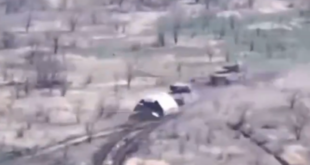Purdue hosted the third annual Collegiate Drone Racing Championship at the intramural fields last weekend.
Purdue was a part of the initial inception and formation of the collegiate drone racing association in 2017, and hosted it again a year later in 2018.
With the help of MultiGP, a league that hosts competitions around the world, Joe Scully, widely considered the premier voice of drone racing, commentated the event while it was live streaming.
2024’s championship featured 62 Pilots from 18 schools. The championship arena, described as “a long technical course” consisted of 20 obstacles, or gates that pilots twist and turn through at about 75 miles per hour.
Pilots enter heats, where time trials are conducted to determine the fastest consecutive three laps around the course. Throughout Sunday, a bracket was formed and Sunday the elimination championship was held once 16 pilots remained.
Drone racing is a technologically evolving sport. While racing, pilots will wear first person view goggles while controlling the drones.
“The drones have a super low latency between the drones and the pilot’s headset so they can see exactly what the drone sees. It’s basically a 10ish millisecond delay, so they can react as fast as possible. The goggles are strapped to their heads and they’re flying off what they see in real time” said Jacob Levin, Purdue drone club vice president.
The goggles, which look like virtual reality headsets, are some of the new advancements of drone racing. With digital video, pilots can fly with full HD color.
“Once you put on the goggles, it’s like a whole other experience where you are really immersed, where you are basically piloting what feels like a spacecraft,” said Aaron Binstock, a junior in electrical engineering.
Drones are expected to collide mid-air, or hit the gates and shatter. The tent where the teams congregated was stock full of extra parts, tools and equipment to fix the drones on the fly.
“Sometimes you’ll break motors, or cameras, sometimes we’ll have batteries break, but those are all things that we as pilots are used to,” Levin said.
The collegiate drone association has certain class limitations on the size of the frame, propeller tips, battery and other “nitty gritty” technical requirements, however teams are encouraged to “customize their drone build exactly how they want,” said Jordan Krueger, the president of the Collegiate Drone Association.
“The drones are all homebuilt, they’re DIY. There are some companies that make pre-built drones, but basically all these guys are taking the standard carbon fiber frame. They’re putting motors on it based on their preferences, they choose their flight controller which translates stick movements into drone flight, and their camera system,” Levin said.
Qualification courses vary throughout the season, but the championship course is designed and released only in a week’s notice. Teams can simulate flying the championship course using a computer program called VelociDrone.
The 2024 Collegiate Drone Racing Championship course is stationed on Purdue’s IM fields this year. The championships started in 2017, the first two years being held at Purdue, and have visited other universities in the years between before returning to campus this year.
“The championship course is a highly technical long track that when you’re flying or watching, it’s hard to tell what’s going on,” said Sean McLaughlin, a junior in mechanical engineering at Virginia Tech who was competing on Sunday. “We basically grind it out in the simulator to try and get the best lines. It’s great for racers, you can build your custom tracks.
“It’s amazing physics.”
On site, many pilots and teams were seen simulating the course ahead of their real heats.
“It’s a bit unconventional, but I use VelociDrone to tune my rates, which will map out my controls to my drones. And that’s been really helpful to figure out the best rates for me and kind of tune that to my racing style” said Tyler Harris, a junior in mechanical and aerospace engineering at Duke.
Once Saturday’s initial bracket was formed, it eventually dwindled down to 16 pilots from nine teams. One of the 16 was Ervin Liao, a freshman in mechanical engineering, whose drone goes by the name Groovy.
“It’s been really fun. I’m excited to get better and come back stronger for the rest of my three years here,” Liao said.
The competition led to the final four racers, two of whom were from York College in Pennsylvania: Alex Suarez and Nathan Blackman.
“Going into the race I like to know what’s happening, and know where to go. It’s just a matter of getting familiar with qualifying and then keeping it consistent in brackets as well,” Saurez said.
Individual piloting is an award in itself, but what really matters were the team scores that were calculated over the two day period.
By the time the gates were taken down, and the scores had been counted, Virginia Tech was declared this year’s champion, followed by Oregon State University at second and Georgia Tech at third.
As is Collegiate Drone Racing Championship tradition, after the final races have been completed, the drone teams line up on the course to perform a footrace. This includes running the course that the drones flew, and throwing their drones up and over the course gates.
“The speeds that we’re seeing here today are, I mean, if you put the number one pilot here today against a pilot from 2016, they would probably lap them four times over this course,” Krueger said.
 Unmanned Aerial Vehicle The latest drone news
Unmanned Aerial Vehicle The latest drone news


